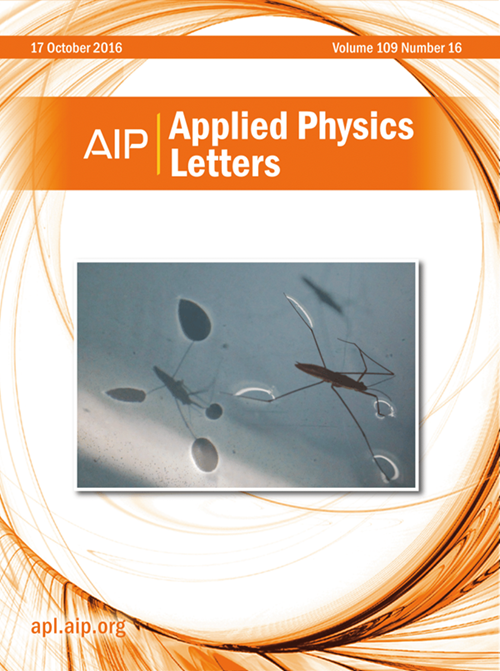掺锗氮化铝中 EPR 信号的非辐射淬灭:DX 中心形成的证据
IF 3.5
2区 物理与天体物理
Q2 PHYSICS, APPLIED
引用次数: 0
摘要
本文章由计算机程序翻译,如有差异,请以英文原文为准。
Nonradiative quenching of EPR signals in germanium-doped AlGaN: Evidence for DX-center formation
We present photo-electron paramagnetic resonance (EPR) measurements and first-principles calculations that indicate germanium (Ge) is a DX center in AlGaN. Our photo-EPR measurements on Ge-doped AlGaN samples show no EPR spectra in the dark, while persistent EPR spectra are observed upon photoexcitation with photon energies greater than ∼1.3 eV. Thermally annealing the samples decreased the EPR signal, with the critical temperature to quench the EPR signal being larger in the lower Al-content sample. Using detailed first-principles calculations of Ge in AlGaN, we show all of these observations can be explained by accounting for the DX configuration of Ge in AlGaN.
求助全文
通过发布文献求助,成功后即可免费获取论文全文。
去求助
来源期刊

Applied Physics Letters
物理-物理:应用
CiteScore
6.40
自引率
10.00%
发文量
1821
审稿时长
1.6 months
期刊介绍:
Applied Physics Letters (APL) features concise, up-to-date reports on significant new findings in applied physics. Emphasizing rapid dissemination of key data and new physical insights, APL offers prompt publication of new experimental and theoretical papers reporting applications of physics phenomena to all branches of science, engineering, and modern technology.
In addition to regular articles, the journal also publishes invited Fast Track, Perspectives, and in-depth Editorials which report on cutting-edge areas in applied physics.
APL Perspectives are forward-looking invited letters which highlight recent developments or discoveries. Emphasis is placed on very recent developments, potentially disruptive technologies, open questions and possible solutions. They also include a mini-roadmap detailing where the community should direct efforts in order for the phenomena to be viable for application and the challenges associated with meeting that performance threshold. Perspectives are characterized by personal viewpoints and opinions of recognized experts in the field.
Fast Track articles are invited original research articles that report results that are particularly novel and important or provide a significant advancement in an emerging field. Because of the urgency and scientific importance of the work, the peer review process is accelerated. If, during the review process, it becomes apparent that the paper does not meet the Fast Track criterion, it is returned to a normal track.
 求助内容:
求助内容: 应助结果提醒方式:
应助结果提醒方式:


